This post is by Chad Rubin of Crucial Vacuum and Skubana.
Ever feel like your competition knows more than you?
One minute it’s going so well. You’re at the top of your product page on Amazon, reviews are flowing in and your biggest concern is getting the next batch of orders delivered on time.
But there’s a niggling worry. Little “what ifs” float around your head. What if a cheaper product comes along? What if I lose my supplier? What if the Chinese sellers catch on and start cutting out the middleman entirely?
Well, I’ve got some good news – it doesn’t matter what you’re worried about. Whether it’s low-priced competitors, direct-to-market manufacturers, or sources of new stock drying up.
In this post I’m going to explain why Chinese sellers are dislodging their rivals and dominating Amazon. I’m also going to show you exactly how they boost demand for their products, increase traffic and grow a following.
Sound good? Let’s dig in.
Why are Chinese sellers dominating the market?
Chinese manufacturers are in a unique position when it comes to Amazon. They know what’s being sold, how much it costs, and where the market is. They’ve also got years of exporting experience.
There are arguments against, of course. You might ask, “How will they navigate the language barrier?” or, “How will they understand the American markets?”
These are fair questions. But let’s look at the facts for a second.
- Over 250,000 Chinese sellers joined Amazon’s marketplace this year.
- 31% of Amazon sellers are based in China.
Here’s a list of Amazon’s top sellers:
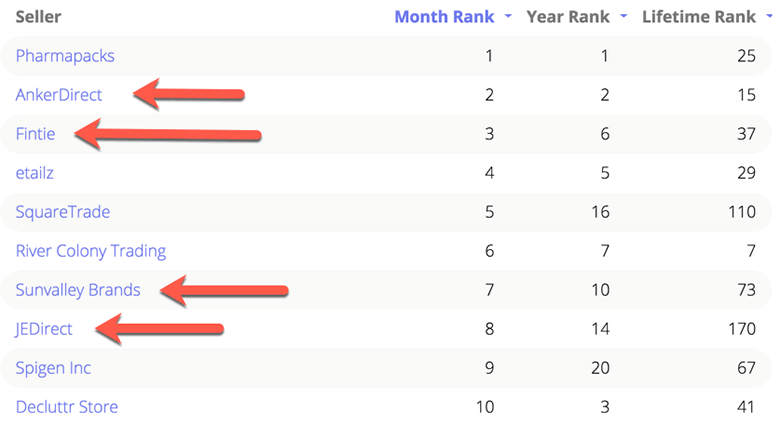
As the arrows show, four of the top ten Amazon sellers on the list are Chinese sellers. The other six sellers are all American and are primarily resellers, based in the US, with the exception of Spigen, who are an American private label seller.
But why is this?
Firstly, direct-to-consumer (D2C) was just a stepping stone. It only prolonged the inevitability of factory-to-consumer (F2C). The factories saw the brands that they were manufacturing products for were selling straight to consumers, and realized that they could manufacture their own, similar products and sell them direct to consumers at lower prices.
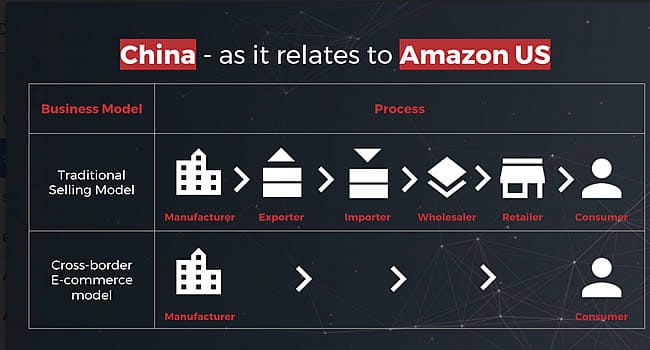
This is where the potential problems start for US sellers, because there are a few ways that Chinese sellers have a huge advantage over them:
- Sales Tax Deficit – While large Amazon sellers are held accountable for sales tax by aggressive states like Pennsylvania and California, Chinese sellers are exempt.
- Shipping Rates – Chinese sellers benefit from heavily discounted USPS shipping rates. The price to ship from China to Connecticut is the same as shipping from New Jersey to Connecticut.
- Reduced Taxes – Income tax? What income tax? The money’s already in a Hong Kong bank account before the tax authorities can blink!
By now, you probably get the threat that Chinese sellers pose, but what should you do?
Well, we’ve looked at what major Chinese sellers are doing, and there are a few practical tips that you can implement.
In particular, we want to look at one major success story. Enter Anker…
TIP #1: Focus on your BRAND
People don’t buy products. They buy brands.
Did you know that many of the manufacturers that supply products to big-brand companies also sell the same products to lesser-known, cheaper brands?
They’re the same products. But people are willing to pay drastically different prices because of the way they’re packaged. That’s the power of brands. Or, rather, it’s the power of trust.
If you can build a brand that people like and trust, you’ll immediately raise yourself above the competition. Just take a look at the rise in consumer interest for Anker.

Anker continues to expand without spending crazy amounts of money on advertising or marketing because of the power of their brand.
While Anker started off on Amazon, they have expanded to eBay, Walmart, Newegg, and AliExpress, as well as having their own custom-built website where you can buy direct. They sell multi-channel and multi-marketplace.
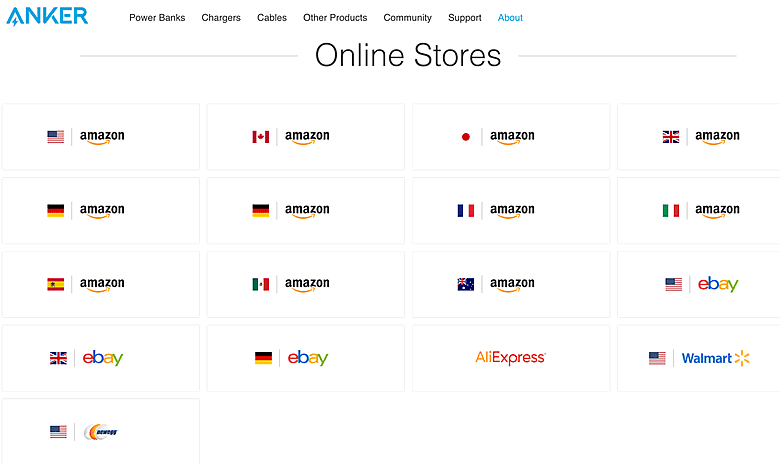
Let’s look at Anker’s Alexa ranking, which ranks businesses based on how much traffic their website receives. If you compare Anker to Belkin, you can see that Anker didn’t just establish itself as one of the top sellers on Amazon, it built a sustainable brand. While Belkin has a slightly higher ranking in America, Anker has a higher ranking globally.
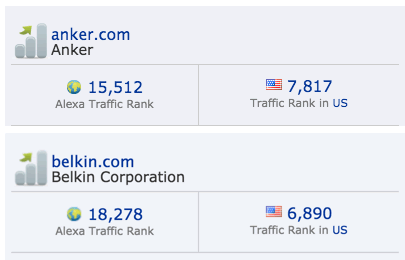
While Anker have built broad brand recognition across the internet, they remain dominant in their category on Amazon. Just look at the sheer volume of search results on Amazon for the word “Anker”.
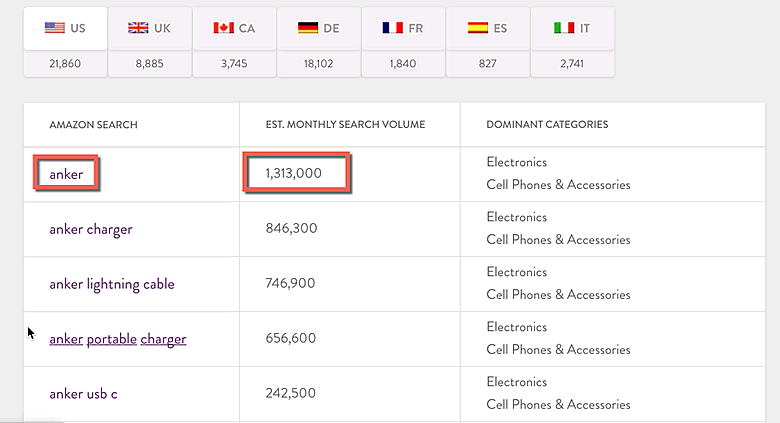
Building a brand allows creates trust. If people trust your products, they’re more likely to buy in the first place and keep coming back. This is great for sellers, as long-term customers drive a significantly higher profit margin.
TIP #2: Generate Customer Feedback From the Get-Go
The earlier you can get feedback, the better, because once you know how your customers think and feel you can adapt your marketing accordingly. This is exactly what Anker did with their latest Indiegogo campaign, where they raised over $1.2 million for their soda-can pocket projector.
Launching with Indiegogo meant Anker could create an immediate feedback loop with US consumers. It also allowed them to test a new idea without using their own hard-earned capital.
Anker was able to show their ideas directly to consumers, take orders early in the product life cycle, and gain valuable feedback.
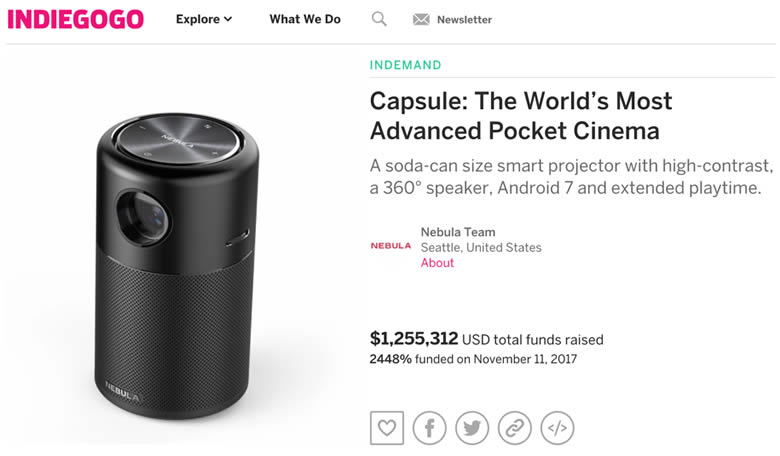
The product isn’t listed as being from Anker, only that it is using “Anker’s battery technology”, but with a little research we discovered the following information.
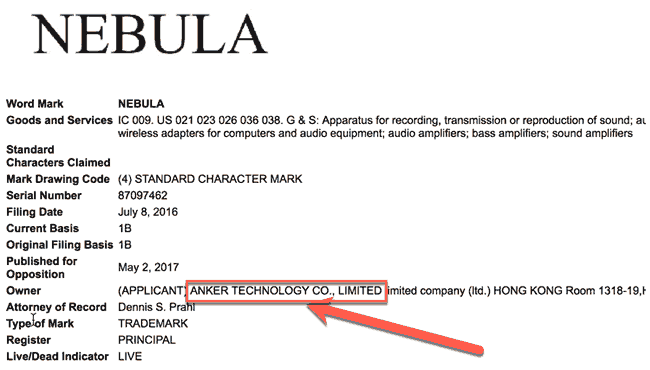
The Indiegogo page does not say Nebula is owned by Anker, or that Capsule is an Anker product, but it does show Anker as the trademark owner and manufacturer for the brand. You can also see Nebula on Anker’s website.
So what can you learn from this process?
Before you package and launch a product, you need to figure out what your ideal customers want. That might sound like an obvious thing to say, but just bear with me.
I’m talking about knowing your market on a deep level. What language do they use? What are their fears and frustrations? What’s most important to them? What do they absolutely hate?
This understanding will feed into the kind of products you offer and how you offer them, whether it’s through Amazon or your own ecommerce store.
This process also shows that feedback is essential! Just like Anker, it’s vital to test new products and gather responses from your audience. You can then go to market safe in the knowledge that you’ve got a perfect fit.
TIP #3: Improve on Best-Selling Products
I’m going to tell you a secret about Amazon. It’s something we’ve covered before.
Amazon has been ripping off other people’s ideas for years! The ecommerce giant is known for keeping an eye on successful private label products and bringing them into their Amazon Basics range. And, it looks like Anker has stolen a page straight from Amazon’s playbook!
You’re likely familiar with the Echo Dot. It was the cheapest Alexa enabled device offered by Amazon. But despite its low price of $49.99, Anker’s Eufy Genie dropped it down to just $34.99. And it kept all the same features – including access to Alexa and more than 15,000 voice commands.
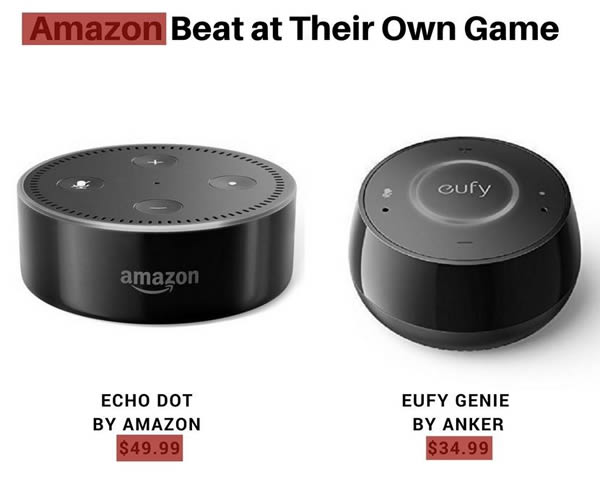
You can use this same strategy to find ultra-successful products and offer low-price alternatives. For example, you can use a tool like MerchantWords to look up the search volume of key products.
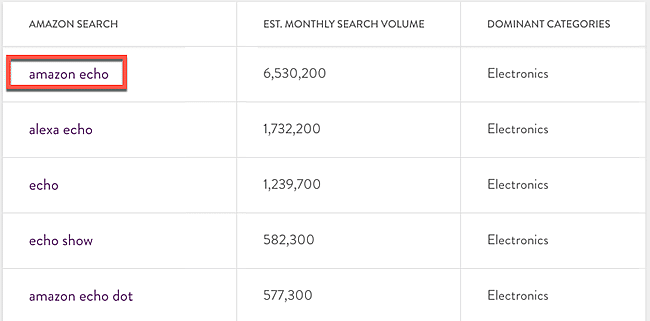
The Amazon Echo has over six million searches. Anker capitalized on that.
You can follow their example and use keyword searches to identify hot products and develop your own (hopefully better) version of the product.
Even if you take only 2% of Amazon Echo’s monthly search volume, that’s still 130,000 searches a month, which is fantastic.
Now you just need to convert that traffic, which should be a doddle if you know your customers well.
TIP #4: Sell Your Products in a Brick-and-Mortar Store
Have you heard about Amazon’s new retail stores? Well, they’re not the only brand moving into retail. A quick look at Anker’s website shows they already have four brand stores – and it’s paying off.
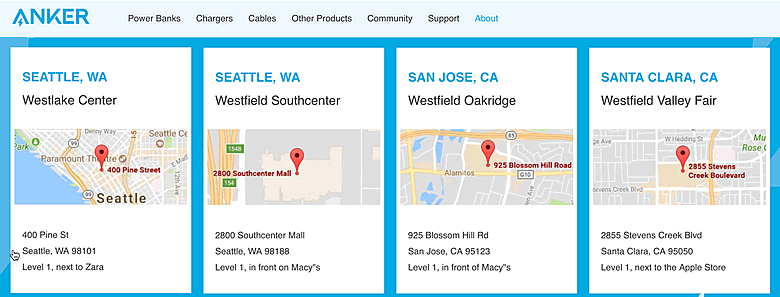
Ecommerce stores transition more easily into retail than traditional retail stores into ecommerce. It’s easier to take off an “e” than it is to add one on!
Not only can customers touch and see products before buying, they can do their own sifting, make better choices, and visualize your company as a brand.
In fact, with higher-quality brand interaction, retail stores allow you to solidify your brand – just think about it. You already know the Amazon brand. You know what they stand for. So what happens when you walk into a brick-and-mortar store? That brand relationship can only deepen.
Equally as important, is the fact that in-store customers are three times as likely to buy again and become hyper-loyal customers.
It’s also worth remembering that while you will have to account for the extra costs of selling your products in physical stores, you’ll save on returns, shipping, and logistics.
Of course, not every ecommerce store can move into retail but if your private label business is big enough and your brand strong enough, it’s a smart option that can pay off. You don’t even need open up your own shop, as just having your product in-store can have a significant positive effect of your brand.
TIP #5: Diversify Your Brand
The riches are in the niches!
Anker entered the ecommerce market as a budget phone accessory brand, that primarily sold phone charger cables. Today, they’ve diversified a lot, having dipped their fingers and toes into everything from batteries to smart-home systems.
What’s more, they’ve created new brands, with each one catering to a different niche. And, what’s important, is that each brand is known for doing one thing exceptionally well.
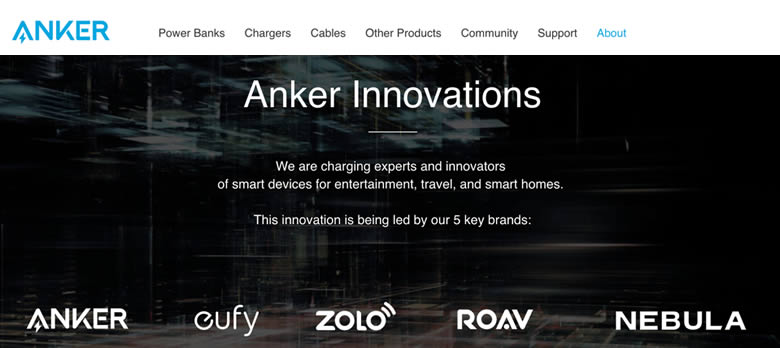
Now, Anker could have chosen to diversify into an ever-expanding range of electronics. So why didn’t they?
Because, people trust brands when they do one thing and do it well. Creating new brands for new niches allows Anker to position themselves at the top of a small market and overcome any negative associations. People no longer see Anker and think, “Oh, a budget charging cable company”.
Yes, diversification does draw attention from your primary brand, and it’s not always necessary, for example, Apple seamlessly moved from computers to MP3 players and phones in the space of a few decades. But, very often, it can allow sellers or brands to position new products more strongly.
So how can you make diversification work for your brand?
If you have a new idea or see an opportunity, examine the market as closely as possible. If it fits well into your existing niche and your current customers meet the demographic, launch it with your existing brand. If it doesn’t, consider diversifying and investing in a new brand that will better suit the product and its demographic.
TIP #6: Connect With Influencers
All of the biggest internet brands have one thing in common. They know how to use the power of influencers to share and broadcast their brand.
You might have seen it from brands like Under Armour, who used social sharing to catapult their brand to international fame.
Anker is no different. The company has consistently asked influencers to share products and drive hype. They offer influencers free products and endorsements in exchange for reviews, mentions on social media and brand promotion.
But does it work?
Let’s take a look at Anker’s social media accounts. You can see that their Instagram account has 55.9K followers, and their Facebook account has nearly 309,000 likes.
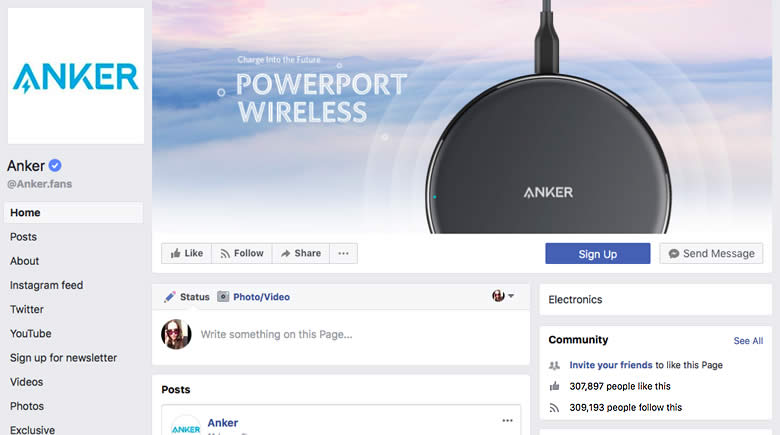
How big a deal is 300,000? Pretty big, when you consider that Whirlpool, one of the largest electronics manufacturers in the United States, only has 75,000.
Social media is an increasingly important marketing channel for ecommerce. It can help you gain traction (even in heavily saturated markets), connect directly with your consumers, and organically acquire customers.
Social media users who already have a large following represent a cost-effective opportunity to reach each audiences naturally.
It’s all about building an engaged, passionate following of people. These followers can then be incentivized to talk about your products, drive referrals and build awareness of your brand.
TIP #7: Locate Your Warehouses Strategically
Anker’s headquarters may be located in China but the company distributes right from California. In addition to using FBA for fast international delivery, Anker maintains a warehouse on the west coast.
Why? Because exporting from China to LAX takes as little as 12 days. Compare this to the East Coast which can involve 23 to 30 days transit time.
This translates into a massive pricing advantage. It’s faster and cheaper to move products into the country, and faster to ship them out to buyers in the USA.
So, what can you do?
Investing in warehousing on the West Coast can save you significant amounts of money, if you’re importing from China. It might also be worth exploring third-party fulfillment and warehousing solutions.
TIP #8: Keep your company SUPER lean
The more employees, the bigger the company… right?
Wrong! Like many ecommerce brands, Anker employs the bare minimum of staff, because they focus on automating repetitive tasks, outsourcing where possible and streamlining processes with the latest technology.
By using this approach, Anker have managed to consistently increase revenues without hiring more staff. Just look at the company’s revenue per employee. In 2016, Anker earned over $300 million with just over 150 employees.
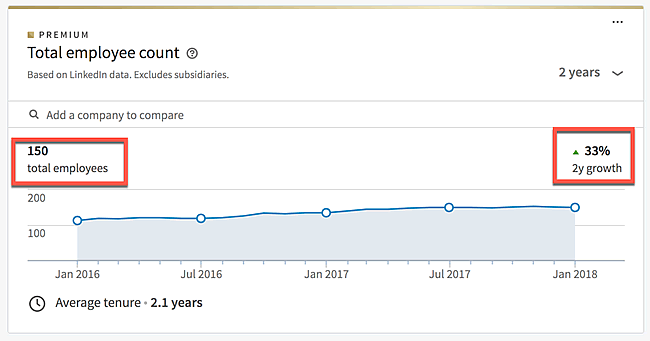
Sellers can replicate this approach by using automation and management software, like Skubana (cough, cough – my company). For example, sellers can use our purchase order tool to automatically create purchase orders based on stock levels. That’s what we call automation!
Conclusion
Imagine this scenario for a second. All around you, companies are being overtaken by Chinese manufacturers. For many, it feels like they just can’t compete on price and distribution. But you’re not worried – not in the slightest.
You know that your brand can weather any storm. It doesn’t matter if a low-quality alternative comes along. Your customers trust you.
You have a deep understanding of the market and an army of loyal followers and influencers to maintain awareness of your products.
You’ve cut costs where you can. You have the best possible distribution strategy. If there’s new tech that can streamline things further, you’re the first to know.
The reality is that most ecommerce companies just aren’t doing this stuff – which leaves the field wide open for you.
This post was by Chad Rubin, President of ecommerce business Crucial Vacuum, CEO of ecommerce ERP system Skubana, and board member of the PROSPER show for Amazon sellers.

So, my question is WHY do the Chinese have these advantages? What specific trade law(s) or regulations give them these benefits. If they sell on Amazon through FBA, then they have the same nexeses as American citizens through Amazon....Right? So are they exempted from state sales tax through the individual states or through the Federal Government? Why is USPS allowed to give them heavy discounts (and why do they want to?) when they are running annual deficits constantly? Is the IRS even TRYING to collect income tax and why hasn't congress stepped in to address this loss of Hundreds of Millions of dollars in revenue?